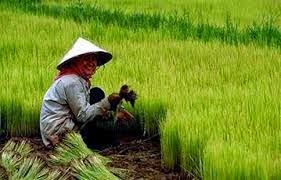Oyster Sauce Marinade
4 tablespoons fresh ginger
1 shallot, chopped
6 cloves garlic
1/2 cup oyster sauce
1/4 cup hoisin sauce
2 tablespoons tomato paste
DIRECTIONS
For the marinade: Put the ginger, shallots, and garlic into a blender, and puree.
Transfer the mixture to a bowl, and add the oyster sauce, hoisin sauce, and tomato paste, and stir to incorporate.
Transfer the mixture to a bowl, and add the oyster sauce, hoisin sauce, and tomato paste, and stir to incorporate.
For the pork: Put the trimmed tenderloins into a baking dish, and pour over half of the marinade, turning to coat. Cover the dish withplastic wrap, then place the pork in the refrigerator, and let it marinate for a minimum of 30 minutes to a maximum of 24 hours.
Preheat the oven to 400 degrees F.
Heat the vegetable oil in a large, ovenproof saute pan over medium-high heat. Remove the pork tenderloins from the marinade and searon all sides in the hot pan. Baste the pork with the remaining marinade throughout the cooking process.
Slide the pan into the preheated oven, and cook until the pork is cooked through, approximately 20 minutes. Allow the meat to rest for 15 minutes before serving.
Per serving: Calories 313; Total Fat 10.5 grams; Saturated Fat 3 grams; Protein 47 grams; Total Carbohydrate 4 grams; Sugar: 1 gram; Fiber 0 grams; Cholesterol 148 milligrams; Sodium 430 milligrams;

















